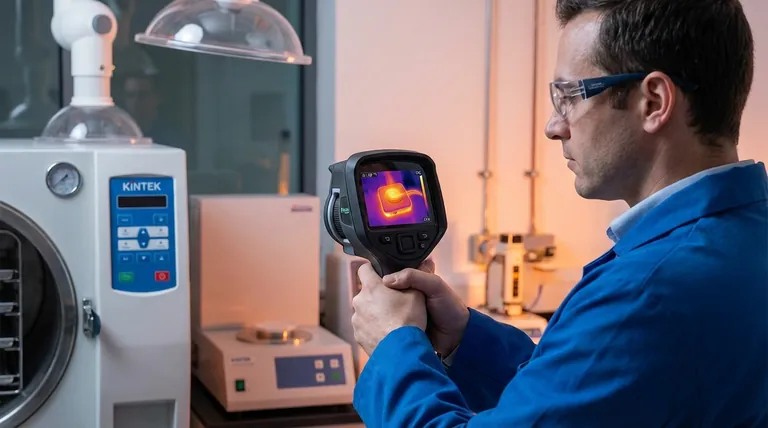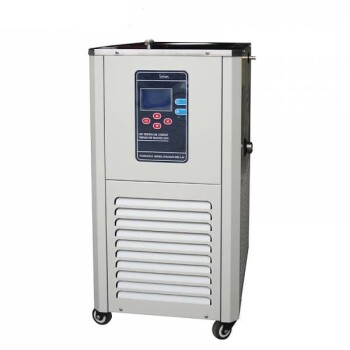The primary, scientifically established safety concern from radiofrequency (RF) energy is tissue heating. This occurs when the body absorbs RF energy and converts it into heat. If the rate of absorption is higher than the body's ability to dissipate that heat, the temperature of the affected tissue will rise, which can lead to damage at sufficiently high power levels.
The critical distinction in RF safety is between non-ionizing and ionizing radiation. Because RF energy is non-ionizing, its only confirmed biological effect at high exposure levels is heating. Safety regulations are built with significant safety margins to ensure public exposure remains far below the threshold where this heating could become harmful.

The Fundamental Mechanism: Thermal Effects
How RF Energy Heats Tissue
Radiofrequency waves have an oscillating electric field. Water molecules, which make up a large portion of our bodies, are polar—meaning they have a slight positive charge on one end and a slight negative charge on the other.
When exposed to an RF field, these water molecules try to align with it. As the field oscillates, the molecules vibrate and rotate rapidly, creating friction with surrounding molecules. This kinetic energy manifests as heat.
This is the exact same principle used by a microwave oven to cook food, but the RF energy from personal devices and antennas is orders ofmagnitude lower in power.
Why This Is Not "Radiation" in the Nuclear Sense
A common point of confusion is the word "radiation." It's crucial to distinguish between two types.
Non-ionizing radiation, which includes RF energy, visible light, and infrared, has enough energy to vibrate or move atoms but not enough to knock electrons out of them. It does not cause direct damage to DNA.
Ionizing radiation, such as X-rays and gamma rays, carries enough energy per particle to strip electrons from atoms (a process called ionization). This is what allows it to break chemical bonds and directly damage a cell's DNA.
Key Factors Influencing Absorption
The amount of heat generated depends on a few key variables:
- Power Density: The amount of power passing through a given area.
- Frequency: Different frequencies are absorbed by the body in different ways.
- Distance from the Source: RF energy dissipates rapidly with distance. Doubling your distance from a source can reduce your exposure by 75% or more.
- Duration of Exposure: The length of time you are exposed to the source.
How Safety Limits Are Established and Enforced
The Role of SAR (Specific Absorption Rate)
The standard metric for measuring the rate at which the body absorbs RF energy is the Specific Absorption Rate (SAR).
SAR is measured in watts per kilogram (W/kg). It provides a straightforward way to quantify the absorbed energy and ensure it remains at safe levels.
Setting Conservative Safety Margins
Regulatory bodies, such as the Federal Communications Commission (FCC) in the United States, set legal limits for public exposure.
Scientists first determine the lowest exposure level at which any adverse thermal effect can be consistently observed in laboratory settings. The legal public limit is then set at a level that is at least 50 times lower than that identified threshold, creating a very large safety margin.
Device Compliance and Testing
Manufacturers of RF-emitting devices, like cell phones, are legally required to test their products to ensure they do not exceed SAR limits.
Importantly, these tests are conducted with the device operating at its absolute maximum power level, a condition rarely encountered in typical daily use.
Addressing Common Concerns and Misconceptions
The Question of Non-Thermal Effects
A great deal of research has been conducted to determine if long-term, low-level RF exposure below the thermal limits could cause other health effects.
To date, the overwhelming scientific consensus is that no adverse health effects have been causally established from RF exposure at levels below the international safety guidelines. While research is ongoing, the established risk remains thermal.
Do 5G and Wi-Fi Pose a New Threat?
Technologies like 5G and Wi-Fi operate using RF energy, just like older technologies. The fundamental physics and the primary safety concern—heating—remain exactly the same.
In fact, some higher-frequency 5G signals (millimeter wave) are absorbed more superficially by the skin and do not penetrate as deeply into the body as the lower-frequency signals used by older cellular technologies.
How to Interpret RF Safety in Your Daily Life
Understanding these principles allows you to assess RF exposure logically and without alarm.
- If your primary focus is general awareness: The key takeaway is that the only established safety concern is tissue heating, and regulatory limits are set with very large, built-in safety margins.
- If your primary focus is evaluating a specific device: Remember that all consumer devices are legally required to operate below safety limits, and simply maintaining a small distance (e.g., using speakerphone) dramatically reduces your exposure level.
- If your primary focus is navigating conflicting news reports: Anchor your understanding on the scientific distinction between non-ionizing (RF) and ionizing (X-ray) radiation, as this principle governs the fundamental potential for harm.
By focusing on the well-established science of thermal effects, you can confidently navigate the topic of RF energy and its role in modern technology.
Summary Table:
| Key Aspect | Description |
|---|---|
| Primary Concern | Tissue heating due to RF energy absorption. |
| Radiation Type | Non-ionizing (does not damage DNA like X-rays). |
| Safety Metric | Specific Absorption Rate (SAR), measured in W/kg. |
| Safety Margin | Legal limits are at least 50x lower than observed effect levels. |
| Key Factor | Power density, frequency, distance, and exposure duration. |
Need precise and safe RF equipment for your laboratory? KINTEK specializes in high-quality lab equipment and consumables, ensuring your research meets the highest safety standards. Our products are designed with reliability and compliance in mind, helping you focus on your work with confidence. Contact us today to learn how we can support your laboratory's needs!
Visual Guide

Related Products
- Laboratory Sterilizer Lab Autoclave Vertical Pressure Steam Sterilizer for Liquid Crystal Display Automatic Type
- 50L Heating Chilling Circulator Cooling Water Bath Circulator for High and Low Temperature Constant Temperature Reaction
- High Temperature Constant Temperature Heating Circulator Water Bath Chiller Circulator for Reaction Bath
- Automatic Laboratory Heat Press Machine
- Double Plate Heating Press Mold for Lab
People Also Ask
- Which factors contribute to successful sterilization using an autoclave? Master the 3 Keys to Sterility
- What are the considerations for autoclave? Ensure Sterilization Success and Safety
- What is the temperature effective for sterilization using autoclave? Achieve Sterile Conditions for Your Lab
- What to look for when buying an autoclave? A Guide to Selecting the Right Sterilization Technology
- How does the lab autoclave work? Achieve Complete Sterilization with High-Pressure Steam



















